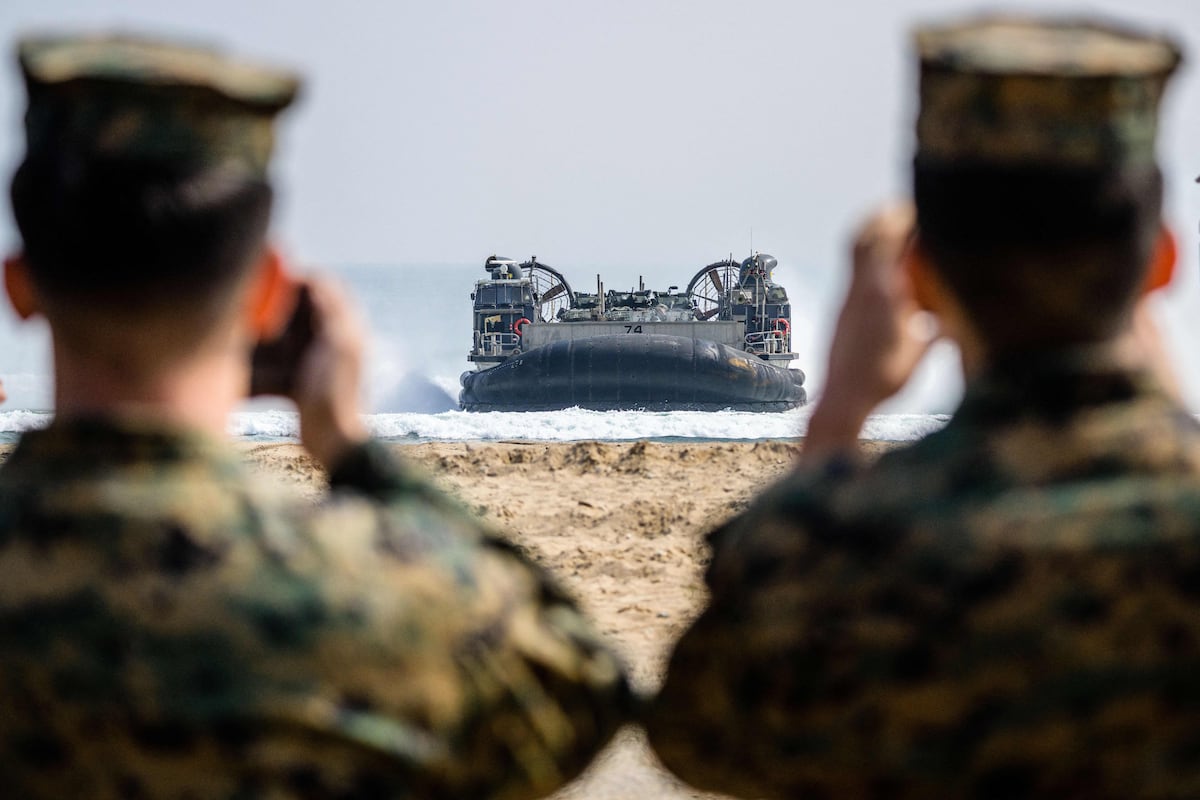Marine leaders will decide this year whether to outfit each of their divisions with a maritime reconnaissance company and brand new medium-sized ships to scope out the littorals.
Lt. Col. Brian Lusczynski mapped out some of the work already completed on the new unit concept today at the annual Modern Day Marine military exposition in Washington.
The companies, one for each of the Marine Corps three active-duty divisions, could contain as many as a dozen to 18 multi-mission reconnaissance watercraft and an undisclosed number of unmanned vessels that would accompany each of them during operations.
“We don’t expect to be trading lead and paint with a destroyer,” Lusczynski said.
The medium-sized watercraft would be larger than the Rigid Hull Inflatable Boats currently in inventory. They must take on open-water sea conditions and haul Marines, their gear and enough command-and-control equipment for a variety of missions.
“You get 10 to 15 miles offshore and you start experiencing open-ocean conditions,” Lusczynski said.
Some of the work to better understand the needs for this new kind of formation and watercraft was done by the Marine Corps Reserve in recent years.
In 2023, Marine Corps Systems Command sought industry input on small drone watercraft that could be used for scouting and reconnaissance. Those types of boats could be used in conjunction with the multi-mission reconnaissance craft under the current unit design concept.
Marines could steer the vessels from shore or from anywhere in communications range on the sea. The vessels would be focused on the “littoral operating environment,” meaning water between land and the open sea.
The craft must be light enough to be hauled around by a Marine CH-53 heavy-lift helicopter or light tactical vehicle, and small enough to fit inside a C-130 aircraft.
Marine Corps Times reported previously that 4th Assault Amphibious Battalion, a reserve unit in Tampa Bay, Florida, conducted experiments with small watercraft in 2023.
If adopted, the boats would be used for “reconnaissance, sensing, and tactical maneuver and logistics support in the maritime domain,” officials said at the time.
The boats would allow Marines to disperse and bring the advantage of being more difficult to detect than large ship-to-shore vessels such as the current landing craft.
Additionally, the boats are faster than the amphibious combat vehicle, the Corps’ most commonly used ship-to-shore connector.
Small boats would allow Marines to fire while in deep water, a U.S. Naval Institute analysis noted in 2020.
Todd South has written about crime, courts, government and the military for multiple publications since 2004 and was named a 2014 Pulitzer finalist for a co-written project on witness intimidation. Todd is a Marine veteran of the Iraq War.
Read the full article here
